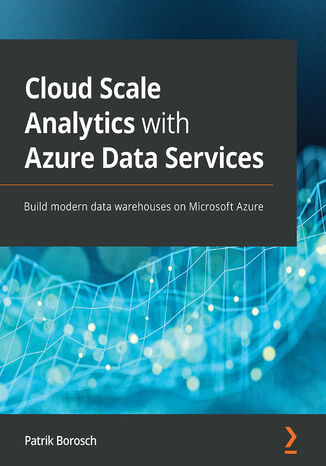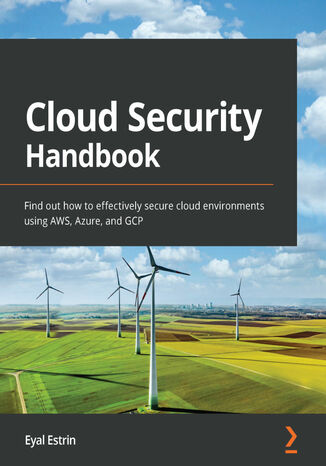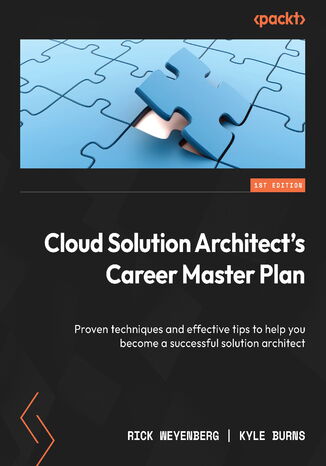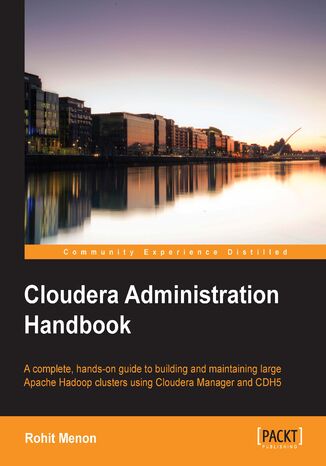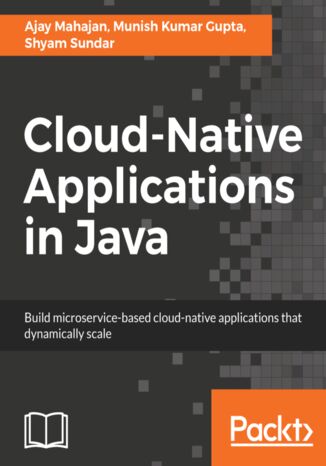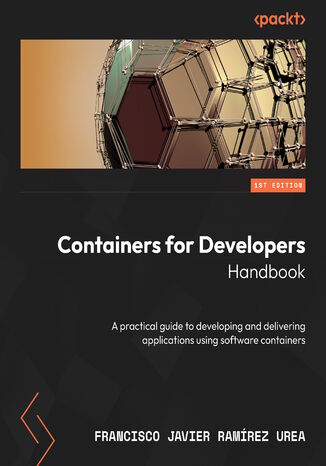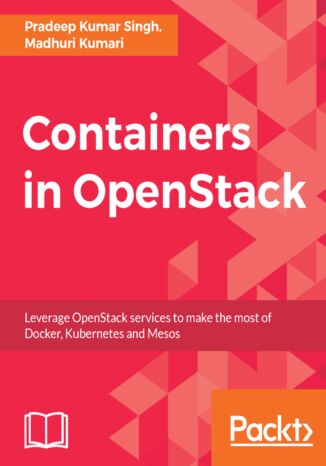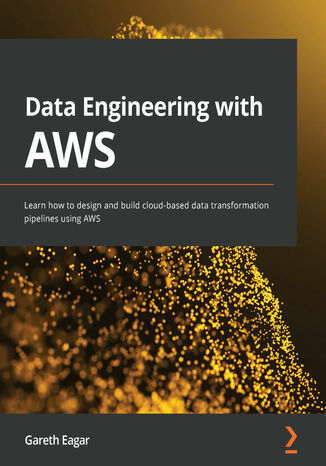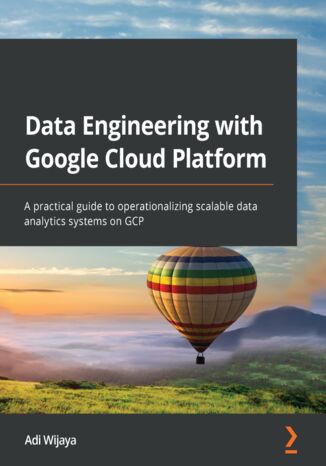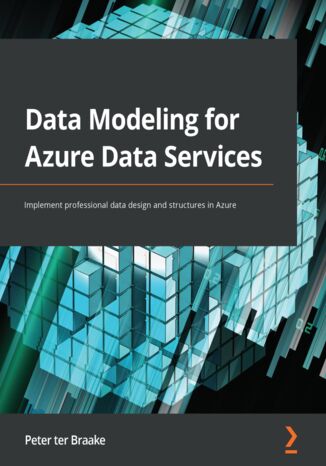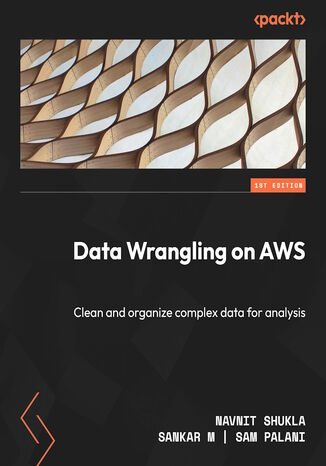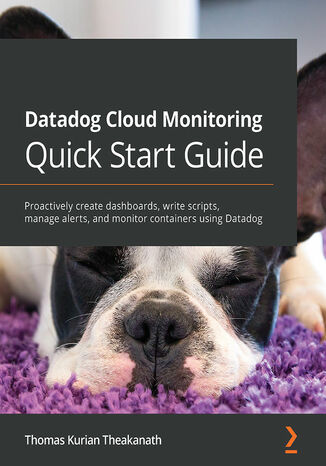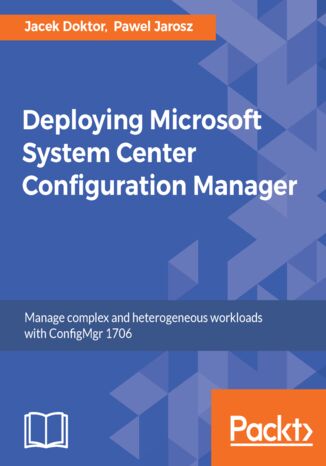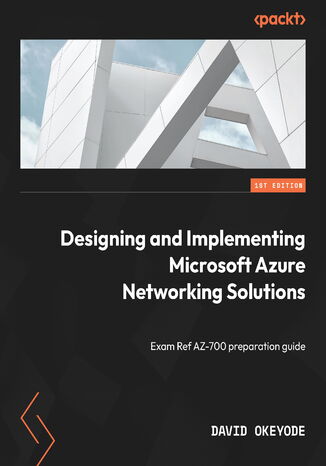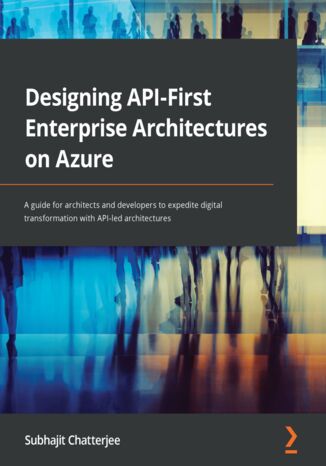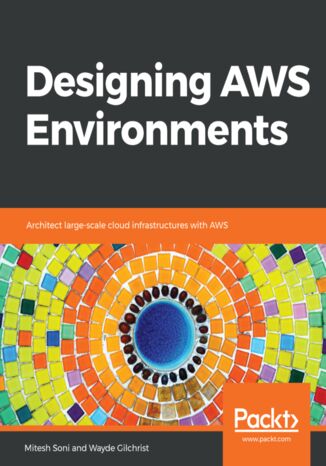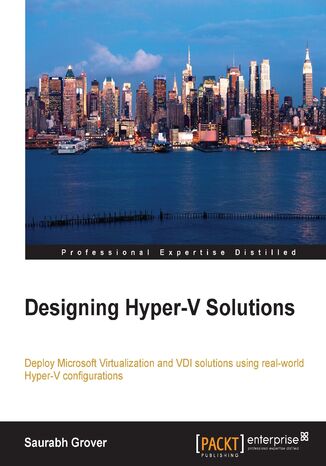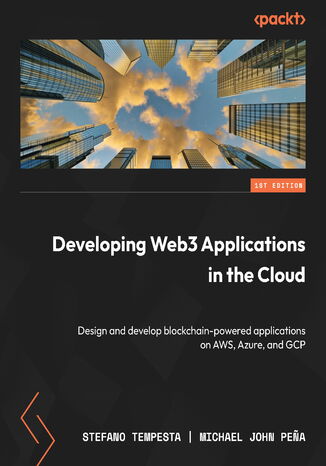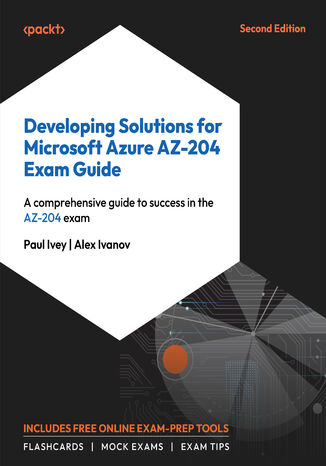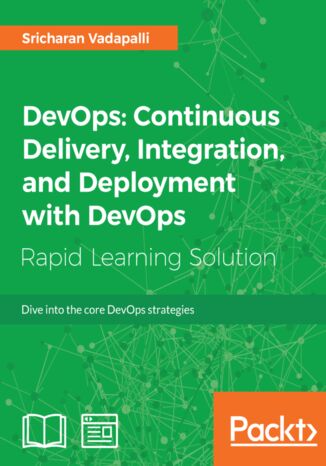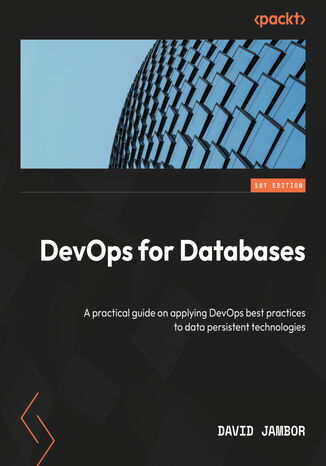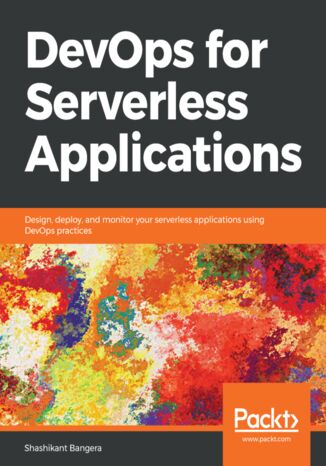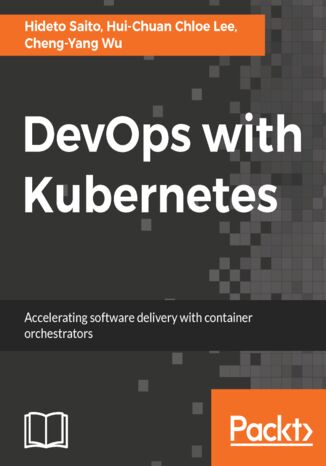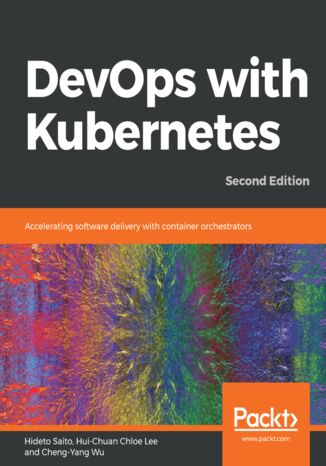Kategorie
Ebooki
-
Biznes i ekonomia
- Bitcoin
- Bizneswoman
- Coaching
- Controlling
- E-biznes
- Ekonomia
- Finanse
- Giełda i inwestycje
- Kompetencje osobiste
- Komputer w biurze
- Komunikacja i negocjacje
- Mała firma
- Marketing
- Motywacja
- Multimedialne szkolenia
- Nieruchomości
- Perswazja i NLP
- Podatki
- Polityka społeczna
- Poradniki
- Prezentacje
- Przywództwo
- Public Relation
- Raporty, analizy
- Sekret
- Social Media
- Sprzedaż
- Start-up
- Twoja kariera
- Zarządzanie
- Zarządzanie projektami
- Zasoby ludzkie (HR)
-
Dla dzieci
-
Dla młodzieży
-
Edukacja
-
Encyklopedie, słowniki
-
E-prasa
- Architektura i wnętrza
- Biznes i Ekonomia
- Dom i ogród
- E-Biznes
- Finanse
- Finanse osobiste
- Firma
- Fotografia
- Informatyka
- Kadry i płace
- Komputery, Excel
- Księgowość
- Kultura i literatura
- Naukowe i akademickie
- Ochrona środowiska
- Opiniotwórcze
- Oświata
- Podatki
- Podróże
- Psychologia
- Religia
- Rolnictwo
- Rynek książki i prasy
- Transport i Spedycja
- Zdrowie i uroda
-
Historia
-
Informatyka
- Aplikacje biurowe
- Bazy danych
- Bioinformatyka
- Biznes IT
- CAD/CAM
- Digital Lifestyle
- DTP
- Elektronika
- Fotografia cyfrowa
- Grafika komputerowa
- Gry
- Hacking
- Hardware
- IT w ekonomii
- Pakiety naukowe
- Podręczniki szkolne
- Podstawy komputera
- Programowanie
- Programowanie mobilne
- Serwery internetowe
- Sieci komputerowe
- Start-up
- Systemy operacyjne
- Sztuczna inteligencja
- Technologia dla dzieci
- Webmasterstwo
-
Inne
-
Języki obce
-
Kultura i sztuka
-
Lektury szkolne
-
Literatura
- Antologie
- Ballada
- Biografie i autobiografie
- Dla dorosłych
- Dramat
- Dzienniki, pamiętniki, listy
- Epos, epopeja
- Esej
- Fantastyka i science-fiction
- Felietony
- Fikcja
- Humor, satyra
- Inne
- Klasyczna
- Kryminał
- Literatura faktu
- Literatura piękna
- Mity i legendy
- Nobliści
- Nowele
- Obyczajowa
- Okultyzm i magia
- Opowiadania
- Pamiętniki
- Podróże
- Poemat
- Poezja
- Polityka
- Popularnonaukowa
- Powieść
- Powieść historyczna
- Proza
- Przygodowa
- Publicystyka
- Reportaż
- Romans i literatura obyczajowa
- Sensacja
- Thriller, Horror
- Wywiady i wspomnienia
-
Nauki przyrodnicze
-
Nauki społeczne
-
Podręczniki szkolne
-
Popularnonaukowe i akademickie
- Archeologia
- Bibliotekoznawstwo
- Filmoznawstwo
- Filologia
- Filologia polska
- Filozofia
- Finanse i bankowość
- Geografia
- Gospodarka
- Handel. Gospodarka światowa
- Historia i archeologia
- Historia sztuki i architektury
- Kulturoznawstwo
- Lingwistyka
- Literaturoznawstwo
- Logistyka
- Matematyka
- Medycyna
- Nauki humanistyczne
- Pedagogika
- Pomoce naukowe
- Popularnonaukowa
- Pozostałe
- Psychologia
- Socjologia
- Teatrologia
- Teologia
- Teorie i nauki ekonomiczne
- Transport i spedycja
- Wychowanie fizyczne
- Zarządzanie i marketing
-
Poradniki
-
Poradniki do gier
-
Poradniki zawodowe i specjalistyczne
-
Prawo
- BHP
- Historia
- Kodeks drogowy. Prawo jazdy
- Nauki prawne
- Ochrona zdrowia
- Ogólne, kompendium wiedzy
- Podręczniki akademickie
- Pozostałe
- Prawo budowlane i lokalowe
- Prawo cywilne
- Prawo finansowe
- Prawo gospodarcze
- Prawo gospodarcze i handlowe
- Prawo karne
- Prawo karne. Przestępstwa karne. Kryminologia
- Prawo międzynarodowe
- Prawo międzynarodowe i zagraniczne
- Prawo ochrony zdrowia
- Prawo oświatowe
- Prawo podatkowe
- Prawo pracy i ubezpieczeń społecznych
- Prawo publiczne, konstytucyjne i administracyjne
- Prawo rodzinne i opiekuńcze
- Prawo rolne
- Prawo socjalne, prawo pracy
- Prawo Unii Europejskiej
- Przemysł
- Rolne i ochrona środowiska
- Słowniki i encyklopedie
- Zamówienia publiczne
- Zarządzanie
-
Przewodniki i podróże
- Afryka
- Albumy
- Ameryka Południowa
- Ameryka Środkowa i Północna
- Australia, Nowa Zelandia, Oceania
- Austria
- Azja
- Bałkany
- Bliski Wschód
- Bułgaria
- Chiny
- Chorwacja
- Czechy
- Dania
- Egipt
- Europa
- Francja
- Góry
- Grecja
- Hiszpania
- Holandia
- Islandia
- Litwa
- Mapy, Plany miast, Atlasy
- Miniprzewodniki
- Niemcy
- Norwegia
- Podróże aktywne
- Polska
- Portugalia
- Pozostałe
- Rosja
- Rumunia
- Słowacja
- Słowenia
- Szwajcaria
- Szwecja
- Świat
- Turcja
- Ukraina
- Węgry
- Wielka Brytania
- Włochy
-
Psychologia
- Filozofie życiowe
- Kompetencje psychospołeczne
- Komunikacja międzyludzka
- Mindfulness
- Ogólne
- Perswazja i NLP
- Psychologia akademicka
- Psychologia duszy i umysłu
- Psychologia pracy
- Relacje i związki
- Rodzicielstwo i psychologia dziecka
- Rozwiązywanie problemów
- Rozwój intelektualny
- Sekret
- Seksualność
- Uwodzenie
- Wygląd i wizerunek
- Życiowe filozofie
-
Religia
-
Sport, fitness, diety
-
Technika i mechanika
Audiobooki
-
Biznes i ekonomia
- Bitcoin
- Bizneswoman
- Coaching
- Controlling
- E-biznes
- Ekonomia
- Finanse
- Giełda i inwestycje
- Kompetencje osobiste
- Komunikacja i negocjacje
- Mała firma
- Marketing
- Motywacja
- Nieruchomości
- Perswazja i NLP
- Podatki
- Poradniki
- Prezentacje
- Przywództwo
- Public Relation
- Sekret
- Social Media
- Sprzedaż
- Start-up
- Twoja kariera
- Zarządzanie
- Zarządzanie projektami
- Zasoby ludzkie (HR)
-
Dla dzieci
-
Dla młodzieży
-
Edukacja
-
Encyklopedie, słowniki
-
Historia
-
Informatyka
-
Inne
-
Języki obce
-
Kultura i sztuka
-
Lektury szkolne
-
Literatura
- Antologie
- Ballada
- Biografie i autobiografie
- Dla dorosłych
- Dramat
- Dzienniki, pamiętniki, listy
- Epos, epopeja
- Esej
- Fantastyka i science-fiction
- Felietony
- Fikcja
- Humor, satyra
- Inne
- Klasyczna
- Kryminał
- Literatura faktu
- Literatura piękna
- Mity i legendy
- Nobliści
- Nowele
- Obyczajowa
- Okultyzm i magia
- Opowiadania
- Pamiętniki
- Podróże
- Poezja
- Polityka
- Popularnonaukowa
- Powieść
- Powieść historyczna
- Proza
- Przygodowa
- Publicystyka
- Reportaż
- Romans i literatura obyczajowa
- Sensacja
- Thriller, Horror
- Wywiady i wspomnienia
-
Nauki przyrodnicze
-
Nauki społeczne
-
Popularnonaukowe i akademickie
-
Poradniki
-
Poradniki zawodowe i specjalistyczne
-
Prawo
-
Przewodniki i podróże
-
Psychologia
- Filozofie życiowe
- Komunikacja międzyludzka
- Mindfulness
- Ogólne
- Perswazja i NLP
- Psychologia akademicka
- Psychologia duszy i umysłu
- Psychologia pracy
- Relacje i związki
- Rodzicielstwo i psychologia dziecka
- Rozwiązywanie problemów
- Rozwój intelektualny
- Sekret
- Seksualność
- Uwodzenie
- Wygląd i wizerunek
- Życiowe filozofie
-
Religia
-
Sport, fitness, diety
-
Technika i mechanika
Kursy video
-
Bazy danych
-
Big Data
-
Biznes i ekonomia
-
Cyberbezpieczeństwo
-
Data Science
-
DevOps
-
Dla dzieci
-
Elektronika
-
Grafika/Wideo/CAX
-
Gry
-
Microsoft Office
-
Narzędzia programistyczne
-
Programowanie
-
Rozwój osobisty
-
Sieci komputerowe
-
Systemy operacyjne
-
Testowanie oprogramowania
-
Urządzenia mobilne
-
UX/UI
-
Web development
Podcasty
- Ebooki
- Programowanie
- Programowanie w chmurze
Programowanie w chmurze
Cloud Scale Analytics with Azure Data Services. Build modern data warehouses on Microsoft Azure
Azure Data Lake, the modern data warehouse architecture, and related data services on Azure enable organizations to build their own customized analytical platform to fit any analytical requirements in terms of volume, speed, and quality.This book is your guide to learning all the features and capabilities of Azure data services for storing, processing, and analyzing data (structured, unstructured, and semi-structured) of any size. You will explore key techniques for ingesting and storing data and perform batch, streaming, and interactive analytics. The book also shows you how to overcome various challenges and complexities relating to productivity and scaling. Next, you will be able to develop and run massive data workloads to perform different actions. Using a cloud-based big data-modern data warehouse-analytics setup, you will also be able to build secure, scalable data estates for enterprises. Finally, you will not only learn how to develop a data warehouse but also understand how to create enterprise-grade security and auditing big data programs.By the end of this Azure book, you will have learned how to develop a powerful and efficient analytical platform to meet enterprise needs.
Securing resources in the cloud is challenging, given that each provider has different mechanisms and processes. Cloud Security Handbook helps you to understand how to embed security best practices in each of the infrastructure building blocks that exist in public clouds.This book will enable information security and cloud engineers to recognize the risks involved in public cloud and find out how to implement security controls as they design, build, and maintain environments in the cloud. You'll begin by learning about the shared responsibility model, cloud service models, and cloud deployment models, before getting to grips with the fundamentals of compute, storage, networking, identity management, encryption, and more. Next, you'll explore common threats and discover how to stay in compliance in cloud environments. As you make progress, you'll implement security in small-scale cloud environments through to production-ready large-scale environments, including hybrid clouds and multi-cloud environments. This book not only focuses on cloud services in general, but it also provides actual examples for using AWS, Azure, and GCP built-in services and capabilities.By the end of this cloud security book, you'll have gained a solid understanding of how to implement security in cloud environments effectively.
In the fast-paced tech world where businesses rely ever more on cloud infrastructure, the role of a cloud solution architect serves as the backbone of operations. The Solution Architects Career Masterplan isn’t just informative; it’s an actionable roadmap to thriving in this role, providing the knowledge and strategies necessary to build a successful career in cloud computing.You’ll dive headfirst into mastering the role's core principles, strategically charting your career trajectory, and expanding your network within the cloud community. As you advance to the practical aspects, you’ll explore tailored education options, gain hands-on experience, and prepare to seize strategic opportunities. Finally, you’ll prepare for success by arming yourself with interview strategies, staying updated with evolving cloud technologies, and actively contributing to the cloud community.By the end of this book, you'll be on your path to a rewarding career in cloud architecture with this trusted companion.
Ajay Mahajan, Munish Kumar Gupta, Shyam Sundar S
Businesses today are evolving so rapidly that they are resorting to the elasticity of the cloud to provide a platform to build and deploy their highly scalable applications. This means developers now are faced with the challenge of building build applications that are native to the cloud. For this, they need to be aware of the environment, tools, and resources they’re coding against. If you’re a Java developer who wants to build secure, resilient, robust, and scalable applications that are targeted for cloud-based deployment, this is the book for you. It will be your one stop guide to building cloud-native applications in Java Spring that are hosted in On-prem or cloud providers - AWS and AzureThe book begins by explaining the driving factors for cloud adoption and shows you how cloud deployment is different from regular application deployment on a standard data centre. You will learn about design patterns specific to applications running in the cloud and find out how you can build a microservice in Java Spring using REST APIsYou will then take a deep dive into the lifecycle of building, testing, and deploying applications with maximum automation to reduce the deployment cycle time. Gradually, you will move on to configuring the AWS and Azure platforms and working with their APIs to deploy your application. Finally, you’ll take a look at API design concerns and their best practices. You’ll also learn how to migrate an existing monolithic application into distributed cloud native applications.By the end, you will understand how to build and monitor a scalable, resilient, and robust cloud native application that is always available and fault tolerant.
Developers are changing their deployment artifacts from application binaries to container images, giving rise to the need to build container-based apps as part of their new development workflow. Managing an app’s life cycle is complex and requires effort—this book will show you how to efficiently develop, share, and execute applications.You’ll learn how to automate the build and delivery process using CI/CD tools with containers as container orchestrators manage the complexity of running cluster-wide applications, creating infrastructure abstraction layers, while your applications run with high availability, resilience, and persistence. As you advance, you’ll develop, test, and debug applications on your desktop and get them ready to run in production with optimal security standards, using deployment patterns and monitoring tools to help identify common issues. You’ll also review deployment patterns that’ll enable you to solve common deployment problems, providing high availability, scalability, and security to your applications. Finally, you’ll explore different solutions to monitor, log, and instrument your applications as per open-source community standards.By the end of this book, you’ll be able to manage your app’s life cycle by implementing CI/CD workflows using containers to automate the building and delivery of its components.
Madhuri Kumari, Pradeep Kumar Singh
Containers are one of the most talked about technologies of recent times. They have become increasingly popular as they are changing the way we develop, deploy, and run software applications. OpenStack gets tremendous traction as it is used by many organizations across the globe and as containers gain in popularity and become complex, it’s necessary for OpenStack to provide various infrastructure resources for containers, such as compute, network, and storage.Containers in OpenStack answers the question, how can OpenStack keep ahead of the increasing challenges of container technology? You will start by getting familiar with container and OpenStack basics, so that you understand how the container ecosystem and OpenStack work together. To understand networking, managing application services and deployment tools, the book has dedicated chapters for different OpenStack projects: Magnum, Zun, Kuryr, Murano, and Kolla. Towards the end, you will be introduced to some best practices to secure your containers and COE on OpenStack, with an overview of using each OpenStack projects for different use cases.
Written by a Senior Data Architect with over twenty-five years of experience in the business, Data Engineering for AWS is a book whose sole aim is to make you proficient in using the AWS ecosystem. Using a thorough and hands-on approach to data, this book will give aspiring and new data engineers a solid theoretical and practical foundation to succeed with AWS.As you progress, you’ll be taken through the services and the skills you need to architect and implement data pipelines on AWS. You'll begin by reviewing important data engineering concepts and some of the core AWS services that form a part of the data engineer's toolkit. You'll then architect a data pipeline, review raw data sources, transform the data, and learn how the transformed data is used by various data consumers. You’ll also learn about populating data marts and data warehouses along with how a data lakehouse fits into the picture. Later, you'll be introduced to AWS tools for analyzing data, including those for ad-hoc SQL queries and creating visualizations. In the final chapters, you'll understand how the power of machine learning and artificial intelligence can be used to draw new insights from data.By the end of this AWS book, you'll be able to carry out data engineering tasks and implement a data pipeline on AWS independently.
With this book, you'll understand how the highly scalable Google Cloud Platform (GCP) enables data engineers to create end-to-end data pipelines right from storing and processing data and workflow orchestration to presenting data through visualization dashboards.Starting with a quick overview of the fundamental concepts of data engineering, you'll learn the various responsibilities of a data engineer and how GCP plays a vital role in fulfilling those responsibilities. As you progress through the chapters, you'll be able to leverage GCP products to build a sample data warehouse using Cloud Storage and BigQuery and a data lake using Dataproc. The book gradually takes you through operations such as data ingestion, data cleansing, transformation, and integrating data with other sources. You'll learn how to design IAM for data governance, deploy ML pipelines with the Vertex AI, leverage pre-built GCP models as a service, and visualize data with Google Data Studio to build compelling reports. Finally, you'll find tips on how to boost your career as a data engineer, take the Professional Data Engineer certification exam, and get ready to become an expert in data engineering with GCP.By the end of this data engineering book, you'll have developed the skills to perform core data engineering tasks and build efficient ETL data pipelines with GCP.
Data Modeling for Azure Data Services. Implement professional data design and structures in Azure
Data is at the heart of all applications and forms the foundation of modern data-driven businesses. With the multitude of data-related use cases and the availability of different data services, choosing the right service and implementing the right design becomes paramount to successful implementation.Data Modeling for Azure Data Services starts with an introduction to databases, entity analysis, and normalizing data. The book then shows you how to design a NoSQL database for optimal performance and scalability and covers how to provision and implement Azure SQL DB, Azure Cosmos DB, and Azure Synapse SQL Pool. As you progress through the chapters, you'll learn about data analytics, Azure Data Lake, and Azure SQL Data Warehouse and explore dimensional modeling, data vault modeling, along with designing and implementing a Data Lake using Azure Storage. You'll also learn how to implement ETL with Azure Data Factory.By the end of this book, you'll have a solid understanding of which Azure data services are the best fit for your model and how to implement the best design for your solution.
Data Wrangling on AWS. Clean and organize complex data for analysis
Navnit Shukla, Sankar M, Sampat Palani
Data wrangling is the process of cleaning, transforming, and organizing raw, messy, or unstructured data into a structured format. It involves processes such as data cleaning, data integration, data transformation, and data enrichment to ensure that the data is accurate, consistent, and suitable for analysis. Data Wrangling on AWS equips you with the knowledge to reap the full potential of AWS data wrangling tools.First, you’ll be introduced to data wrangling on AWS and will be familiarized with data wrangling services available in AWS. You’ll understand how to work with AWS Glue DataBrew, AWS data wrangler, and AWS Sagemaker. Next, you’ll discover other AWS services like Amazon S3, Redshift, Athena, and Quicksight. Additionally, you’ll explore advanced topics such as performing Pandas data operation with AWS data wrangler, optimizing ML data with AWS SageMaker, building the data warehouse with Glue DataBrew, along with security and monitoring aspects.By the end of this book, you’ll be well-equipped to perform data wrangling using AWS services.
Datadog is an essential cloud monitoring and operational analytics tool which enables the monitoring of servers, virtual machines, containers, databases, third-party tools, and application services. IT and DevOps teams can easily leverage Datadog to monitor infrastructure and cloud services, and this book will show you how.The book starts by describing basic monitoring concepts and types of monitoring that are rolled out in a large-scale IT production engineering environment. Moving on, the book covers how standard monitoring features are implemented on the Datadog platform and how they can be rolled out in a real-world production environment. As you advance, you'll discover how Datadog is integrated with popular software components that are used to build cloud platforms. The book also provides details on how to use monitoring standards such as Java Management Extensions (JMX) and StatsD to extend the Datadog platform. Finally, you'll get to grips with monitoring fundamentals, learn how monitoring can be rolled out using Datadog proactively, and find out how to extend and customize the Datadog platform.By the end of this Datadog book, you will have gained the skills needed to monitor your cloud infrastructure and the software applications running on it using Datadog.
It becomes important to plan, design, and deploy configurations when administrators know that Configuration Manager interacts with a number of infrastructure components such as Active Directory Domain Services, network protocols, Windows Server services, and so on.Via real-world-world deployment scenarios, this book will help you implement a single primary site or multiples sites. You will be able to efficiently plan and deploy a multiple-site hierarchy such as central administration site. Next, you will learn various methods to plan and deploy Configuration Manager clients, secure them and make the most of new features offered through ConfigMgr 1706 like compliance, deploying updates operating systems to the endpoints. Then, this book will show you how to install, configure, and run SQL reports to extract information. Lastly, you will also learn how to create and manage users access in an ConfigMgr environmentBy the end of this book, you will have learned to use the built-in mechanism to back up and restore data and also design maintenance plan.
Designing and Implementing Microsoft Azure Networking Solutions. Exam Ref AZ-700 preparation guide
Designing and Implementing Microsoft Azure Networking Solutions is a comprehensive guide that covers every aspect of the AZ-700 exam to help you fully prepare to take the certification exam.Packed with essential information, this book is a valuable resource for Azure cloud professionals, helping you build practical skills to design and implement name resolution, VNet routing, cross-VNet connectivity, and hybrid network connectivity using the VPN Gateway and the ExpressRoute Gateway. It provides step-by-step instructions to design and implement an Azure Virtual WAN architecture for enterprise use cases.Additionally, the book offers detailed guidance on network security design and implementation, application delivery services, private platform service connectivity, and monitoring networks in Azure. Throughout the book, you’ll find hands-on labs carefully integrated to align with the exam objectives of the Azure Network Engineer certification (AZ-700), complemented by practice questions at the end of each chapter, allowing you to test your knowledge.By the end of this book, you’ll have mastered the fundamentals of Azure networking and be ready to take the AZ-700 exam.
API-centric architectures are foundational to delivering omnichannel experiences for an enterprise. With this book, developers will learn techniques to design loosely coupled, cloud-based, business-tier interfaces that can be consumed by a variety of client applications.Using real-world examples and case studies, the book helps you get to grips with the cloudbased design and implementation of reliable and resilient API-centric solutions. Starting with the evolution of enterprise applications, you'll learn how API-based integration architectures drive digital transformation. You'll then learn about the important principles and practices that apply to cloud-based API architectures and advance to exploring the different architecture styles and their implementation in Azure. This book is written from a practitioner's point of view, so you'll discover ideas and practices that have worked successfully in various customer scenarios.By the end of this book, you'll be able to architect, design, deploy, and monetize your API solutions in the Azure cloud while implementing best practices and industry standards.
Designing AWS Environments. Architect large-scale cloud infrastructures with AWS
Amazon Web Services (AWS) provides trusted,cloud-based solutions to help you meet your business needs. Running your solutions in the AWS Cloud can help you get your applications up and running faster while providing the security to meet your compliance requirements. This book begins by familiarizing you with the key capabilities to architect and host applications, websites, and services on AWS. We explain the available options for AWS free tier with virtual instances and demonstrate how you can launch and connect them. Using practical examples, you’ll be able to design and deploy networking and hosting solutions for large deployments. Finally, the book focuses on security and important elements of scalability and high availability using AWS VPC, Elastic Load Balancing, and Auto scaling. By the end of this book, you will have handson experience of working with AWS instances,VPC, Elastic Load Balancing, and Auto scalingrelated tasks on Amazon Web Services.
Stefano Tempesta, Michael John Pena
As Web3 technologies continue to gain momentum across industries, businesses are looking for new ways to leverage the benefits of Web3 and stay at the forefront of technological innovation. This comprehensive guide offers an in-depth exploration of cloud-native blockchain fundamentals, providing valuable insights into the benefits and challenges of deploying these technologies in the cloud. From foundational concepts to advanced techniques, the book covers everything you need to know about developing and deploying secure, scalable blockchain solutions on AWS, Azure, and GCP. Through hands-on tutorials and projects, you’ll explore the latest tools, technologies, real-world use cases, and best practices to expand your understanding of the field’s complexities and opportunities. This book ensures easy comprehension through practical examples and access to source code on GitHub. As you advance, you’ll master platform selection and apply your newfound knowledge to tackle complex problems and deliver innovative cloud-native blockchain solutions tailored for your specific needs. By the end of this book, you’ll have a deep understanding of cloud-native blockchain deployment and implementation, and you’ll be equipped with the skills and knowledge to build secure and scalable solutions.
Get ready to delve into Microsoft Azure and build efficient cloud-based solutions with this updated second edition. Authored by seasoned Microsoft trainers, Paul Ivey and Alex Ivanov, this book offers a structured approach to mastering the AZ-204 exam topics while focusing on the intricacies of Azure development.You’ll familiarize yourself with cloud fundamentals, understanding the core concepts of Azure and various cloud models. Next, you’ll gain insights into Azure App Service web apps, containers and container-related services in Azure, Azure Functions, and solutions using Cosmos DB and Azure Blob Storage. Later, you'll learn how to secure your cloud solutions effectively as well as how to implement message- and event-based solutions and caching. You’ll also explore how to monitor and troubleshoot your solutions effectively. To build on your skills, you’ll get hands-on with monitoring, troubleshooting, and optimizing Azure applications, ensuring peak performance and reliability. Moving ahead, you’ll be able to connect seamlessly to third-party services, harnessing the power of API management, event-based solutions, and message-based solutions.By the end of this MS Azure book, you'll not only be well-prepared to pass the AZ-204 exam but also be equipped with practical skills to excel in Azure development projects.
DevOps is the most widely used software engineering culture and practice that aim sat software development and operation. Continuous integration is a cornerstone technique of DevOps that merges software code updates from developers into a shared central mainline.This book takes a practical approach and covers the tools and strategies of DevOps. It starts with familiarizing you with DevOps framework and then shows how toper form continuous delivery, integration, and deployment with DevOps. You will explore DevOps process maturity frameworks and progression models with checklist templates for each phase of DevOps. You will also be familiar with agile terminology, methodology, and the benefits accrued by an organization by adopting it. You will also get acquainted with popular tools such as Git, Jenkins ,Maven, Gerrit, Nexus, Selenium, and so on.You will learn configuration, automation, and the implementation of infrastructure automation (Infrastructure as Code) with tools such as Chef and Ansible.This book is ideal for engineers, architects, and developers, who wish to learn the core strategies of DevOps.This book is embedded with useful assessments that will help you revise the concepts you have learned in this book. This book is repurposed for this specific learning experience from material from Packt's Hands-on DevOps by Sricharan Vadapalli.
In today's rapidly evolving world of DevOps, traditional silos are a thing of the past. Database administrators are no longer the only experts; site reliability engineers (SREs) and DevOps engineers are database experts as well. This blurring of the lines has led to increased responsibilities, making members of high-performing DevOps teams responsible for end-to-end ownership. This book helps you master DevOps for databases, making it a must-have resource for achieving success in the ever-changing world of DevOps.You’ll begin by exploring real-world examples of DevOps implementation and its significance in modern data-persistent technologies, before progressing into the various types of database technologies and recognizing their strengths, weaknesses, and commonalities. As you advance, the chapters will teach you about design, implementation, testing, and operations using practical examples, as well as common design patterns, combining them with tooling, technology, and strategies for different types of data-persistent technologies. You’ll also learn how to create complex end-to-end implementation, deployment, and cloud infrastructure strategies defined as code.By the end of this book, you’ll be equipped with the knowledge and tools to design, build, and operate complex systems efficiently.
Serverless applications are becoming very popular among developers and are generating a buzz in the tech market. Many organizations struggle with the effective implementation of DevOps with serverless applications. DevOps for Serverless Applications takes you through different DevOps-related scenarios to give you a solid foundation in serverless deployment.You will start by understanding the concepts of serverless architecture and development, and why they are important. Then, you will get to grips with the DevOps ideology and gain an understanding of how it fits into the Serverless Framework. You'll cover deployment framework building and deployment with CI and CD pipelines for serverless applications. You will also explore log management and issue reporting in the serverless environment. In the concluding chapters, you will learn important security tips and best practices for secure pipeline management.By the end of this book, you will be in a position to effectively build a complete CI and CD delivery pipeline with log management for serverless applications.
DevOps with Kubernetes. Accelerating software delivery with container orchestrators
Hideto Saito, Hui-Chuan Chloe Lee, Cheng-Yang Wu
Containerization is said to be the best way to implement DevOps. Google developed Kubernetes, which orchestrates containers efficiently and is considered the frontrunner in container orchestration. Kubernetes is an orchestrator that creates and manages your containers on clusters of servers. This book will guide you from simply deploying a container to administrate a Kubernetes cluster, and then you will learn how to do monitoring, logging, and continuous deployment in DevOps. The initial stages of the book will introduce the fundamental DevOps and the concept of containers. It will move on to how to containerize applications and deploy them into. The book will then introducenetworks in Kubernetes. We then move on to advanced DevOps skills such as monitoring, logging, and continuous deployment in Kubernetes. It will proceed to introduce permission control for Kubernetes resources via attribute-based access control and role-based access control. The final stage of the book will cover deploying and managing yourcontainer clusters on the popular public cloud Amazon Web Services and GoogleCloud Platform. At the end of the book, other orchestration frameworks, such asDocker Swarm mode, Amazon ECS, and Apache Mesos will be discussed.
DevOps with Kubernetes. Accelerating software delivery with container orchestrators - Second Edition
Hideto Saito, Hui-Chuan Chloe Lee, Cheng-Yang Wu
Kubernetes has been widely adopted across public clouds and on-premise data centers. As we're living in an era of microservices, knowing how to use and manage Kubernetes is an essential skill for everyone in the IT industry.This book is a guide to everything you need to know about Kubernetes—from simply deploying a container to administrating Kubernetes clusters wisely. You'll learn about DevOps fundamentals, as well as deploying a monolithic application as microservices and using Kubernetes to orchestrate them. You will then gain an insight into the Kubernetes network, extensions, authentication and authorization. With the DevOps spirit in mind, you'll learn how to allocate resources to your application and prepare to scale them efficiently. Knowing the status and activity of the application and clusters is crucial, so we’ll learn about monitoring and logging in Kubernetes. Having an improved ability to observe your services means that you will be able to build a continuous delivery pipeline with confidence. At the end of the book, you'll learn how to run managed Kubernetes services on three top cloud providers: Google Cloud Platform, Amazon Web Services, and Microsoft Azure.

